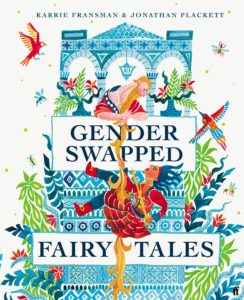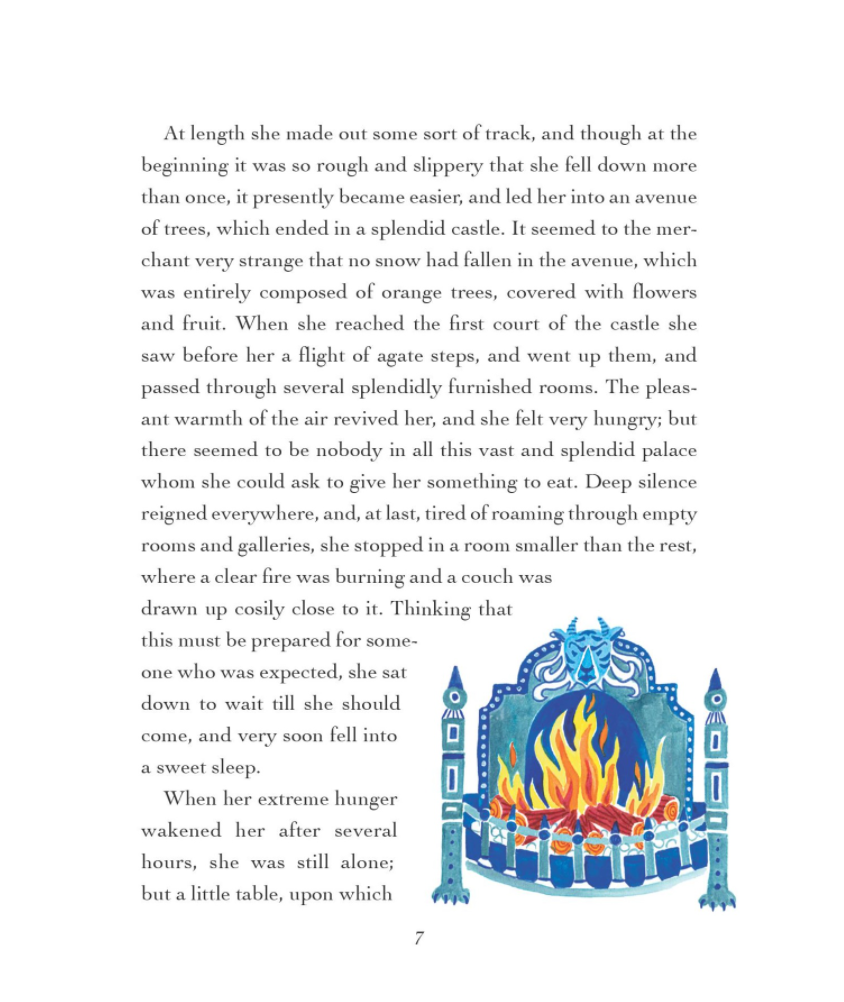Gender Swapped Fairy Tales
Creators: Karrie Fransman & Jonathan Plackett
Published October 19, 2021 by Faber & Faber
Summary: Discover a collection of fairy tales unlike the ones you’ve read before . . .
Once upon a time, in the middle of winter, a King sat at a window and sewed. As he sewed and gazed out onto the landscape, he pricked his finger with the needle, and three drops of blood fell onto the snow outside.
People have been telling fairy tales to their children for hundreds of years. And for almost as long, people have been rewriting those fairy tales – to help their children imagine a world where they are the heroes. Karrie and Jon were reading their child these stories when they hit upon a dilemma, something previous versions of these stories were missing, and so they decided to make one vital change . . .
They haven’t rewritten the stories in this book. They haven’t reimagined endings, or reinvented characters. What they have done is switch all the genders.
It might not sound like that much of a change, but you’ll be dazzled by the world this swap creates – and amazed by the new characters you’re about to discover.
Hear from the Creators:
Review: This one does some really wonderful things. I love how it pushes the reader to reexamine assumptions we have around the social construct of gender. The author of an article in The Guardian about the book said it best about what truly made this book for me:
Plainly, the core audience is the malleable young mind, a child at the age of such innocence that they haven’t yet internalised the gender prejudice all around them, and who will head into the world thinking of women as adventurers and men as very much in touch with their emotions. But more fascinating – particularly if your children are too old and cynical for such an enterprise – is to read it yourself for what jars, what surprises, what seems implausible, what repels.
While in life I have no problem with a female chief executive, for some reason I can’t get my head around a lady miller. Dads who cook? Sure, I had one of those myself. Yet when “One day [Little Red Riding Hood’s] father, having made some custards, said to him …” I couldn’t even concentrate on the instruction (which is “take these to your grandfather”, obviously) for the din of my interior monologue, saying: “DADS DON’T COOK CUSTARD”.
The obvious and persistent bias – and I wonder whether, also, the most life-defining – is the beauty standard, the fact that a woman is judged by her appearance in a way a man is not, that her ugliness or beauty both inform the world’s view of her and become the whole of her, excluding all other traits. It’s revealed in a fact as simple as “beauty” functioning as a noun where “handsome” does not. How could a handsome man contract into “a handsome”? How would we know how daring he also was? “The Sleeping Handsome in the Wood”, “Handsome and the Beast”, all ram home, with a light, rueful humour, the timeless message to a woman in fiction: be beautiful, or be evil, or go home.
Also, I do want to note that the authors do a great job in their introduction explaining how they wanted to swap the “two dominant gender constructs to disrupt the binary” and that there is definitely a multitude of genders and that their book is not disputing that.
My one downfall for the book is that even though the authors tried really hard to make this as mathematical as possible and with no bias on their part, it still shown through in some ways: why does Rapunzel have to have a long beard instead of long hair? Why does the big bad wolf have on lipstick and heels just because she’s female? I would have loved to see gender norms pushed even more.
Teachers’ Tools for Navigation: What a fun classroom experience this book would be! Students can take their favorite traditional literature and gender swap it to see how it changes assumptions.
Discussion Questions:
- How did changing the gendering words in the book push your thinking while reading?
- What stereotypes were pushed in the book just by switching the words?
- How did the illustrations add to the story?
- Do you think the authors should have changed other aspects of the stories as well?
- What purpose did the authors hope to meet by changing these stories in this way?
Flagged Passages:
Read This If You Love: Fairy Tales
Recommended For:
**Thank you to Katie Halata for providing a copy for review!**






For hundreds of years, people have told their children fairy tales. People have been rewriting fairy tales for almost as long, in order to assist their children conceive a world in which they are the heroes. Thank you!